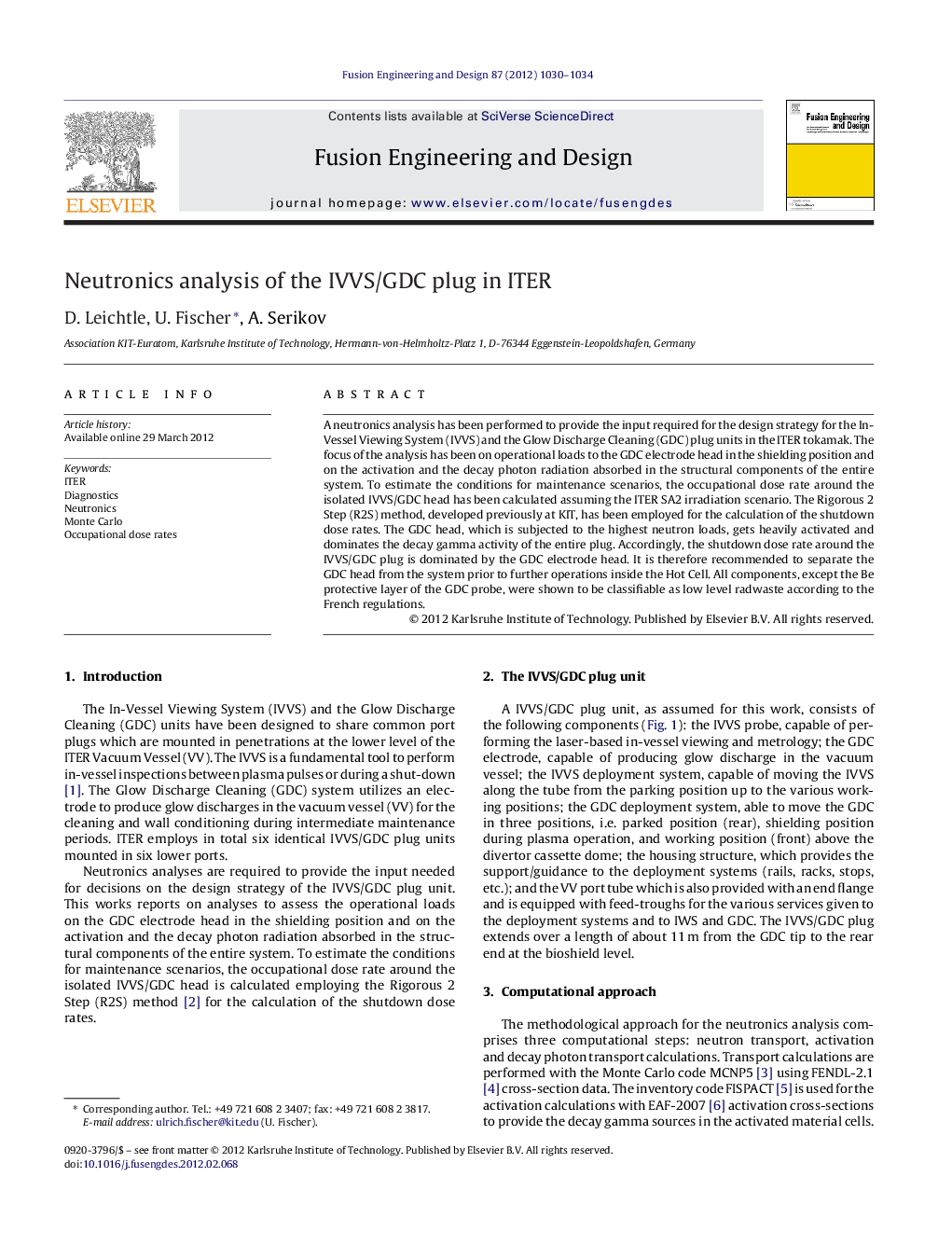| Article ID | Journal | Published Year | Pages | File Type |
|---|---|---|---|---|
| 272029 | Fusion Engineering and Design | 2012 | 5 Pages |
A neutronics analysis has been performed to provide the input required for the design strategy for the In-Vessel Viewing System (IVVS) and the Glow Discharge Cleaning (GDC) plug units in the ITER tokamak. The focus of the analysis has been on operational loads to the GDC electrode head in the shielding position and on the activation and the decay photon radiation absorbed in the structural components of the entire system. To estimate the conditions for maintenance scenarios, the occupational dose rate around the isolated IVVS/GDC head has been calculated assuming the ITER SA2 irradiation scenario. The Rigorous 2 Step (R2S) method, developed previously at KIT, has been employed for the calculation of the shutdown dose rates. The GDC head, which is subjected to the highest neutron loads, gets heavily activated and dominates the decay gamma activity of the entire plug. Accordingly, the shutdown dose rate around the IVVS/GDC plug is dominated by the GDC electrode head. It is therefore recommended to separate the GDC head from the system prior to further operations inside the Hot Cell. All components, except the Be protective layer of the GDC probe, were shown to be classifiable as low level radwaste according to the French regulations.
► 3D neutronics analysis of the In-Vessel Viewing System (IVVS) and the Glow Discharge Cleaning (GDC) plug unit. ► Occupational dose rates around the isolated IVVS/GDC head are calculated on the basis of the rigorous 2-step (R2S) approach. ► The GDC head is shown to dominate the decay gamma activity and the shutdown dose rate around the isolated IVVS/GDC plug. ► All components, except the Be protective layer of the GDC probe, are shown to be classifiable as low level radwaste.
